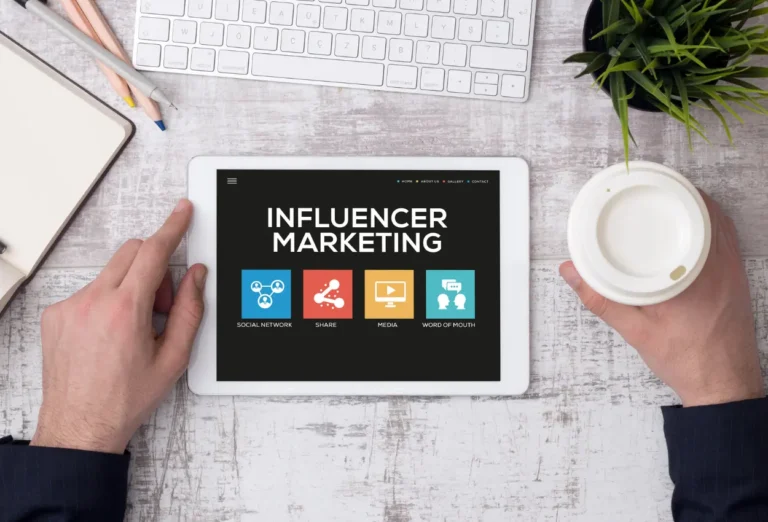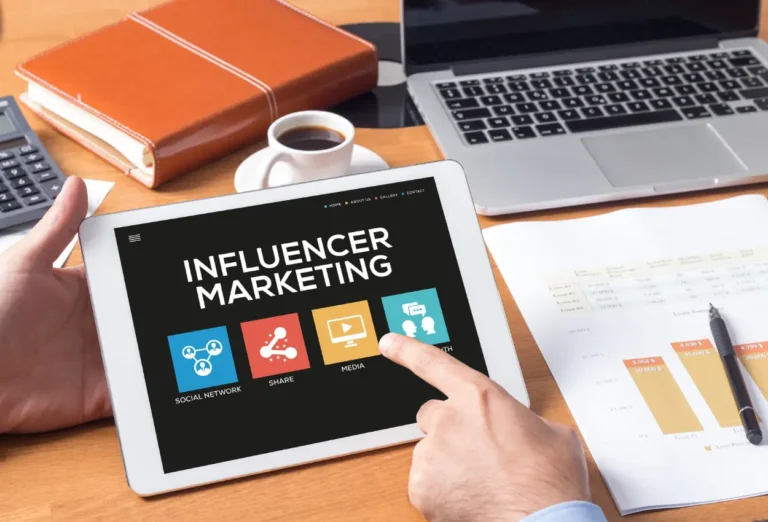Influencer Marketing Best Practices Brands Can’t Afford to Ignore
Navigating the world of influencer marketing can be tricky for brands. It’s crucial to get it right.
In the bustling digital landscape, influencer marketing stands as a cornerstone for brands looking to reach new audiences. Engaging with influencers is more than just a trend; it’s a powerful marketing strategy that can yield impressive results when done correctly.
With audiences becoming increasingly skeptical of traditional advertising, turning to trusted online personalities can make all the difference. This introduction will guide you through the essential best practices in influencer marketing that brands need to consider. From selecting the right influencer to crafting authentic messages, these strategies are designed to help brands form meaningful partnerships and drive genuine engagement. Whether you’re a small business or a large corporation, ignoring these practices could mean missing out on a significant opportunity to connect with your target market and grow your brand.
The Rise Of Influencer Marketing
The world of ads is changing fast. Influencer marketing is taking over. People trust influencers more than big ads. Brands are noticing this big shift.
Stats prove this trend is not going away. Many people buy things after seeing an influencer use it. This shows the power of influencer marketing.
| Year | People Trusting Influencers (%) |
|---|---|
| 2019 | 49 |
| 2020 | 53 |
| 2021 | 61 |
Ads on TV and magazines are not as strong as before. Now, seeing a favorite person use a product means a lot. Brands can’t ignore this. Working with the right influencer is key.
Identifying The Right Influencers
Choosing the right influencers is a must. They should share your brand’s values. This ensures a genuine connection with their audience. Trust matters more than just big numbers.
Look for influencers with high engagement rates. Likes, comments, and shares show that their followers care. High numbers are good, but active followers are better. They can really help your brand shine.
Crafting Authentic Partnerships
Co-creating content builds trust and interest. Brands and influencers should work together to make things. It makes the message seem real. Let the influencer’s style shine to keep their fans happy.
Choose long-term relationships over one-off campaigns. This helps a brand grow with the influencer. Fans see the partnership as real and not just an ad. It feels more like a friend’s suggestion than a sales pitch.
Setting Clear Goals And KPIs
Setting clear goals is key. Think about what you want. A goal might be more sales or bigger online reach. Each goal needs a way to measure success. This is where KPIs (Key Performance Indicators) come into play.
For measuring return on investment, think simple. How much did you spend? How much did you make? Use basic math to see if the effort paid off. Did you gain more followers? Did sales go up? These numbers tell you if it worked.
Remember, not all results are instant. Some benefits take time. So, patience is important. Always check your progress. This helps you know if you are on the right path.
Legal Aspects And Disclosure
Brands must know the FTC guidelines for influencer marketing. It’s the law to tell if you pay for a post. Influencers have to be clear about ads or sponsorships. A simple “#ad” or “#sponsored” can work.
Be honest with your audience. Trust is key. If viewers doubt a post’s truth, they might not trust the brand. A clear message keeps everyone happy. It’s good for the brand and the influencer.
Leveraging Diverse Platforms
Choosing the best social media for your brand is key. Know your audience and where they spend time online. Popular sites like Facebook and Instagram are great. But don’t forget about YouTube and Twitter. They offer different ways to connect with users.
Look into new platforms too. Sites like TikTok and Clubhouse are gaining users fast. They could be good for your brand. Each platform has its own vibe. Pick ones that match your brand’s style.
| Platform | Type of Content | Audience |
|---|---|---|
| Mixed media | Wide range | |
| Visual | Youth to middle age | |
| YouTube | Videos | All ages |
| TikTok | Short videos | Mostly young people |
Creating A Content Calendar
Creating a content calendar is key. Think about timing and frequency. Post often but not too much. Find a balance. Look at the calendar year. Plan for holidays and big events. This helps you stay relevant.
For example, plan posts around Christmas or the Super Bowl. This makes your content timely. It grabs attention. Use a simple table to track your plans. Like this:
| Month | Event | Post Frequency |
|---|---|---|
| December | Christmas | Twice a week |
| February | Super Bowl | Once a week |
Start planning early. Adjust as you learn what works. Your audience will notice. And they will stay engaged. It’s all about planning and adapting.
Engagement And Community Building
Building a strong bond with followers is key. Ask questions and create polls. These invite fans to talk and share. Short quizzes also spark joy and chats. Use simple words in posts. This makes joining in easy for everyone.
Show appreciation for customer loyalty. Share user content on your brand’s pages. This makes fans feel seen and part of the team. Offer exclusive deals to your community. This keeps them close and happy.
Remember, loyal fans talk to friends about brands they love. This word-of-mouth can be very powerful. A happy customer might bring in many new ones. So, treat your followers well. They are important to your brand’s story.
Analyzing And Optimizing Campaigns
Brands need to use analytics tools to check their influencer campaigns. These tools show which parts work well. They also show parts that need better ideas. Brands learn what content their audience likes. This helps them make smarter choices for future campaigns.
Seeing data helps brands change their strategies. Maybe a video did not do well. Then, a brand can try photos next time. Or maybe posts on Tuesday get more likes. So, the brand can post more on Tuesdays. It’s all about using data to get better results.
Future Trends In Influencer Marketing
AI and technology are changing the game. They help us see what people might like next. This is big for brands who work with influencers. Why? Because knowing what people want means making better ads. And making better ads means more people might buy what you’re selling.
Let’s talk about consumer behavior. This means what people buy and why. AI can guess this. How? By looking at lots of data. This helps brands stay ahead. They can pick the right influencers. The ones that talk to the right people. The ones that can make a product popular.
So, what’s the point? Brands need to pay attention to these changes. And they need to use AI and technology. This way, they can work better with influencers. And reach more people in a way that feels real and true.
Conclusion
Embracing influencer marketing is key for any brand looking to grow. Keep it authentic and choose the right voices to speak for your product. Remember, trust and relevance are your allies. Engage with influencers who resonate with your values. Measure success with clear goals in mind.
Always stay flexible and ready to adapt. This approach will help your brand connect with audiences in meaningful ways. Keep these best practices in mind and watch your brand flourish.






